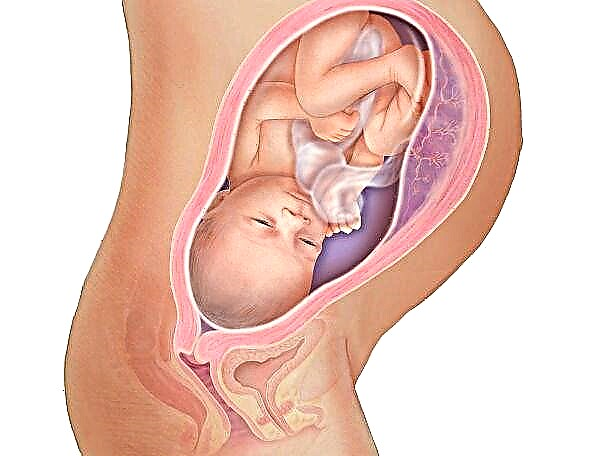
Rectal prolapse in children is a pathology with which parents of babies are not so rare. At the same time, medicine is not ready to name the exact reasons for this phenomenon, but there are absolutely specific rules that will not allow this to happen. And moms and dads should know about them.
What it is?
Rectal prolapse is an ailment that is manifested by the prolapse of the lower intestine and the eversion of its fragment outward through the anus. Prolapse can be a painful condition that can be very uncomfortable for a child. Over time, the loss becomes more frequent, the risk of necrotic changes in the intestine increases, and fecal incontinence is possible.
Among all proctological problems of childhood, this diagnosis is considered the most frequent. The thing is that children have their own age differences in the structure of the colon and sphincters. Therefore, most often the disease is diagnosed in babies aged 1 to 3 years, with a lesser frequency in preschoolers. This almost never happens in adolescents.
There is a certain gender dependence. So, in male children, rectal prolapse occurs almost twice as often as in girls of the same age.


Causes
The exact root causes of prolapse of the distal rectum are currently unknown to medicine. But numerous studies of the problem have revealed several triggers - factors under the influence of which the disease develops. Most children lose their bowels when several triggers coincide at once.
- Age anatomical features - in babies, for example, at 1 or 2 years old, the rectum is almost vertical. If the child is pushing, then the lower part of the intestine has a higher pressure than in children over 4-5 years old with similar actions. The pelvic muscles are weaker in children than in adults. This causes prolapse if intra-abdominal pressure rises.
- Large intestine diseases - dolichosigma (lengthening of the sigmoid colon, accompanied by impaired defecation and motility) can be the cause of prolapse. The relationship between prolapse and megadolihosigma (a more pronounced form of lengthening of the sigmoid colon) has also been proven.
- Bowel dysfunctions - a tendency to constipation or loose stools, inflammation of the intestines, intestinal infections and exhaustion, unhealthy diet - all this can not only disrupt the processes of emptying the bowel from feces, but also cause it to fall out.
- Dysbacteriosis and disruption of the nervous system - at the same time, the coordination of muscle contractions of the intestines is disturbed, which leads to constipation, episodic diarrhea and, as a result, to loss.
- Parental mistakes when planting a child on a potty - if the baby spends a very long time on the potty and mom and dad do not control the time that the baby spends on this hygienic device, the likelihood of the distal part of the rectum falling out with an everted outward increases.


Symptoms and Signs
The pathology manifests itself in the same way as it sounds - that is, the prolapse is the main symptom and the main diagnostic sign. In a calm state, loss may not be noticeable. It usually appears and becomes evident after bowel movement. If you ask the child to bend down after he poops, then you can consider a reddish fragment of the mucous membrane that is visible in the lumen of the anus.
At the initial stage, the child may not have any complaints of pain or discomfort. He behaves naturally, his state of health does not change. The intestine, a few hours after defecation, returns to its original normal position on its own.
But over time, the disease always progresses, and soon spontaneous reduction begins to require more and more time. The intestine, which remains outside, swells, becomes inflamed, there are complaints of pain and discomfort in the anus.
If reduction becomes impossible and part of the intestine is outside for a long time, the anal sphincter becomes overstretched. This leads to the fact that the baby cannot arbitrarily hold intestinal gases, they go out uncontrollably, and then the ability to restrain the passage of feces is lost and the child begins to defecate involuntarily.
Over time, if the child does not receive treatment, the prolapsed part of the intestine becomes covered with ulcers, necrosis is observed. This can cause peritonitis.


What to do?
Noticing the symptoms described above, many parents cannot identify the disease on their own and turn to the pediatrician with complaints that the child has “something foreign in the priest”. The doctor, unlike mothers and fathers, is able to identify pathology during the most ordinary examination of the anus, as well as during palpation of the rectum (digital examination). Preschoolers, who already understand well what is required of them, can specifically push in the doctor's office, and then the diagnosis will not cause any difficulties at all, because the symptoms of the disease are most vividly manifested when the pressure inside the abdominal cavity is increased.
To establish an accurate diagnosis, the doctor may advise to undergo an irrigography, to make an X-ray of the large intestine using a contrast agent. Children, who often suffer from such a disease as rectal prolapse, against the background of infections, must be tested - they undergo bacteriological examination of feces.
All this gives a lot of information about whether there are changes in the intestine, what they are, whether there are infectious pathogens, how pronounced the dysbiosis is, etc. All this will help to prescribe the correct treatment.


How to treat?
No matter how scary the diagnosis sounds, parents do not need to panic and despair - in 95% of all cases of rectal prolapse, the child does not need any surgery, the disease can be treated with conservative methods, but this will require the baby's family to strictly follow all the doctor's recommendations.
If the examination shows an infection, it is recommended first treatment with antibacterial drugs, sometimes other agents are recommended, such as antifungal agents, if the infection is of fungal origin.
Regardless of whether there is an infection or not, the child is shown a diet in which his diet will be low in fiber. Parents will need to ensure that the pressure inside the abdominal cavity does not increase, for this the doctor prescribes enemas before the baby poops.

If self-regulation of the prolapsed part of the intestine is not possible, manual reduction is performed. You should not be afraid of this procedure, how to carry it out for the first time, the doctor in the clinic will show, and therefore the parents may well perform the necessary manipulations at home on their own.
For this, the child is laid on his stomach, his legs are asked to be raised and spread apart. Mom puts a glove on her hand, smears her finger with Vaseline. It is also applied to the fallen out part of the intestine. The first is the central part, which "looks" into the lumen of the anus. As the central part is reduced, the peripheral parts are pulled inward.
Sometimes the intestine after reduction cannot be kept inside, this usually occurs with significant weakness of the sphincter. In this case, it is recommended to mechanically hold it so that another loss does not occur. For this, the baby's buttocks are brought together and sealed with a plaster. The baby usually spends several days in the prone position. Then, within a month, the child is shown emptying in a lying position on its side.


Usually, all these measures can cure the disease in full. But if the desired effect is not there, the child is prescribed the introduction of an alcohol solution into the fiber of the pararectal zone. This is done by doctors in the hospital. In most cases, one procedure is enough.
Surgical treatment - Thirsh's operation, is rarely performed. It consists in the surgical narrowing of the anus.
In 99% of cases of rectal prolapse in children, medical forecasts are favorable for the wave. If the treatment was given correctly, the risk of relapse is minimized.

In order to exclude the disease, it is important to plant the child correctly on the pot, to prevent constipation and diarrhea. Dr. Komarovsky recommends to monitor the child's nutrition, as well as to avoid lengthy "meetings" on the potty.

The specialist tells more about the disease in the video below.



